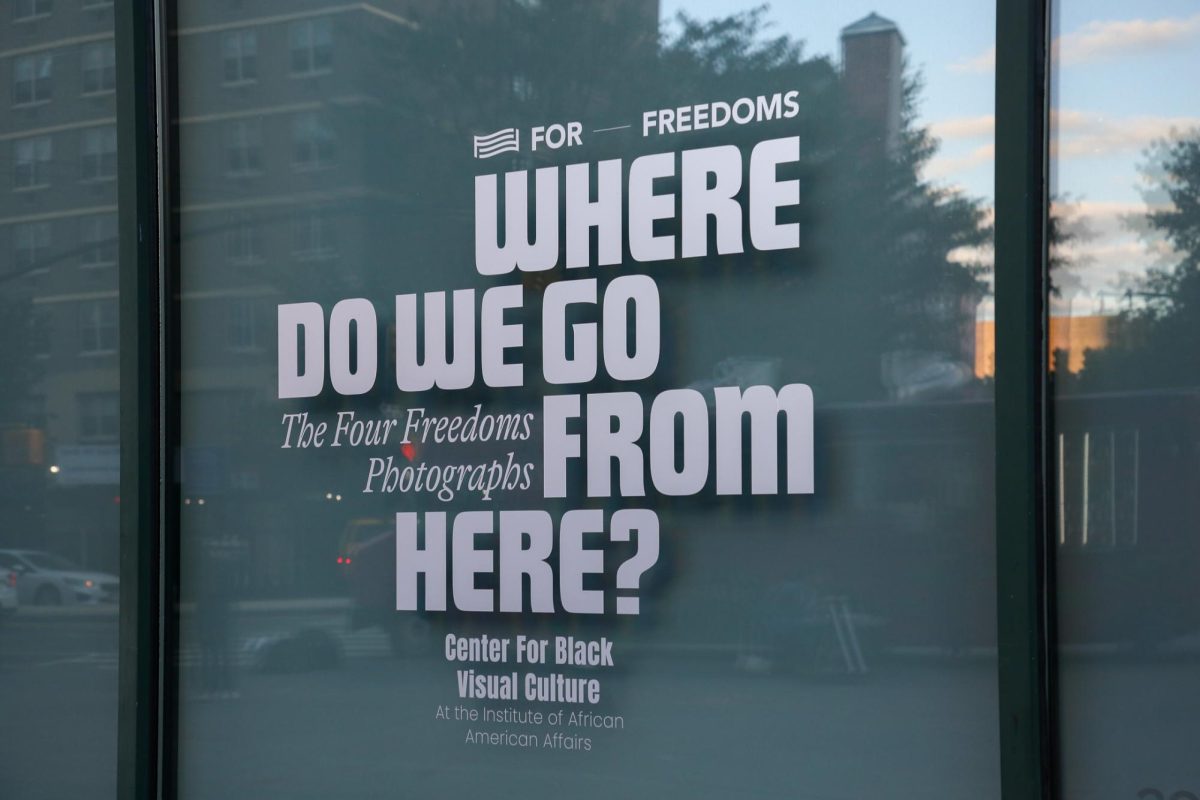Inside 20 Cooper Square, there are 16 photos displaying a medley of lively faces and scenes as part of the exhibition, “Where Do We Go From Here? The Four Freedoms Photographs.” The collection was created in partnership with the artist coalition For Freedoms, which was founded by Tisch alumni Hank Willis Thomas and Wyatt Gallery, along with Eric Gottesman and Michelle Woo.
The photography collection took inspiration from American artist Norman Rockwell’s 1943 “Four Freedoms” paintings, which are a reference to former President Franklin D. Roosevelt’s 1941 State of the Union Address. Roosevelt communicated his vision of a postwar world based on four human freedoms: freedom of speech, freedom of worship, freedom from want and freedom from fear. In his paintings, Rockwell created a scene representing each of these freedoms. However, Rockwell’s paintings lack any diversity in race, sexuality or religion — all of the paintings depict white subjects and heterosexual couples, and include only Christian symbolism.
“The Four Freedoms Photographs” aims to modernize these paintings “by declaring diversity an essential and undeniable component of freedom,” as stated on the gallery wall. In the new exhibition, each of the aforementioned freedoms has a dedicated collection of photographs. In the photographs, Rockwell’s white protagonists are replaced with a diverse array of activists and artists across the four collections.
The “Speech” photographs show people posing in positions that mimic the subjects of Rockwell’s painting “Freedom of Speech.” In one image, within a room of seated individuals, one stands up apart from the crowd with a parted mouth to indicate that they are speaking. Notably, American actor and activist Jesse Williams raises his hand during a passionate speech.
The “Worship” images reinforce the collection’s goal of declaring diversity as an essential component of freedom by introducing religious diversity. In one photo, a person holds their palms together in prayer and another holds their palms open. Some hold religious pendants while others wear religious garments like hijabs and turbans. The group prays together as bright light illuminates their faces, producing an attitude of mutual respect. In the gallery, all four “Worship” photos are placed side by side to magnify the unifying sentiment.
“Want” presents a large family sitting around a dinner table. Two individuals stand at the head of the table and offer a large turkey to the group. Some smile while gazing at the food, and others smile while making eye contact with each other. Conversely, in Rockwell’s “Freedom from Want,” a social hierarchy is depicted, with the older individuals presenting the food and, similarly to his other paintings, the individuals are all white.
“Fear” illustrates a scene with two parents putting their children to bed. The parents stand over their children, tucking them into bed and rubbing their backs with affection. They smile as they look down on their children peacefully at rest. The photographs represent both heterosexual and homosexual relationships with racially diverse subjects. The photographer has even chosen to swap out the white baby doll lying on the ground in the bottom right of Rockwell’s painting for dolls of various races.
Possibly the most remarkable part of this exhibition is the high-gloss finish on the photographs and the reflective nature of the glass that encases them. Observing the collection, one not only sees themselves figuratively in the array of individuals presented, but also literally, through the mirror effect of the glass.
“The Four Freedoms Photographs” is an impressive and well-executed collection that not only reinforces the importance of diversity but also unifies communities whose identities are often underrepresented. With the exhibition’s intent being to represent audiences of diverse backgrounds, almost all visitors can leave feeling seen.
“Where Do We Go From Here? The Four Freedoms Photographs” is on view at NYU’s Center for Black Visual Culture until Nov. 2, free of charge.
Contact Siobhán Minerva at [email protected]


























































































































































